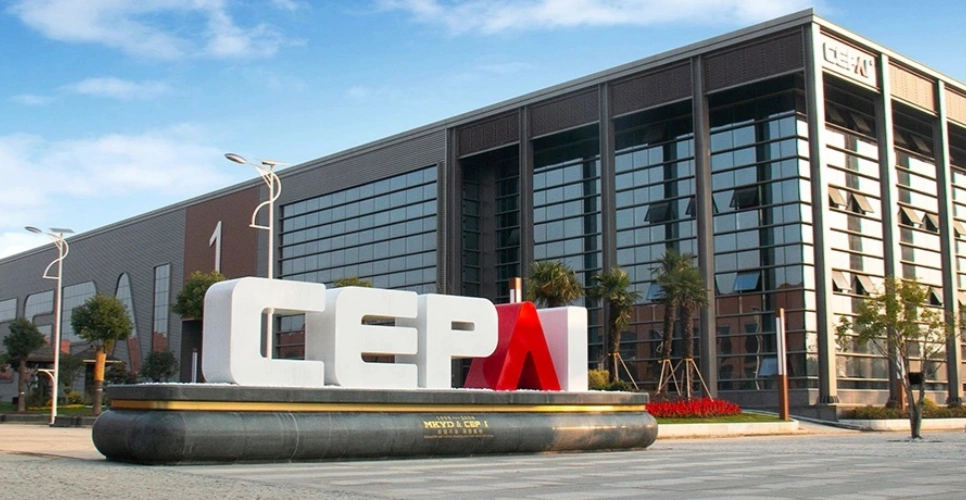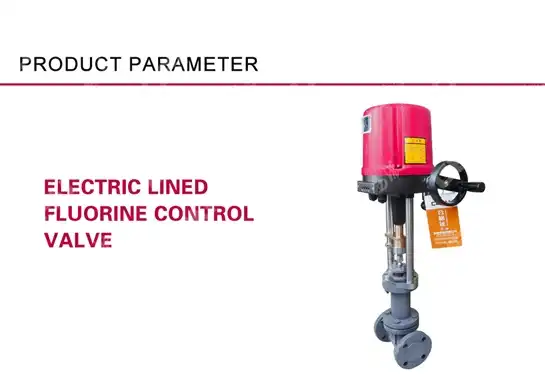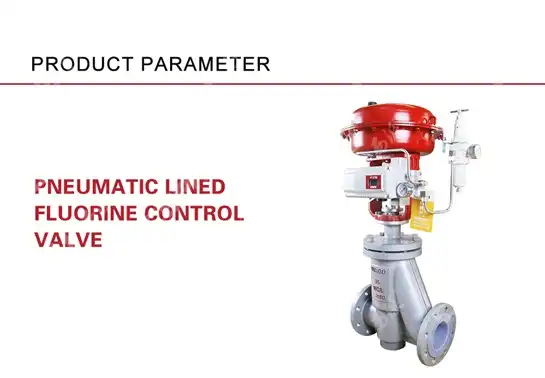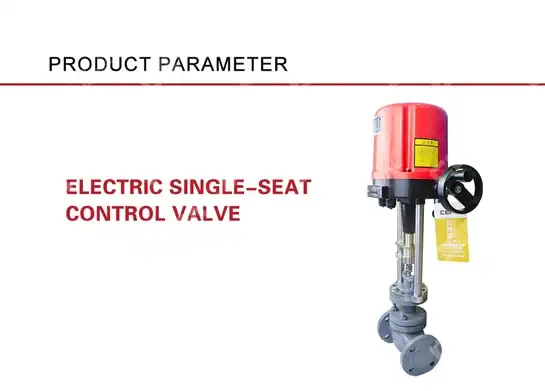The Secret to Steam Control: Why High-Temperature Control Valves Are a Must
Imagine a critical manufacturing process grinding to a halt because of thermal shock damage, or a power plant losing millions in efficiency due to steam temperature fluctuations. These scenarios plague industrial operations worldwide, highlighting the urgent need for precise steam control. The secret to steam control lies in understanding why High-Temperature Control Valves are not just beneficial—they are absolutely essential for any system handling superheated steam above 400°F. These specialized valves represent the critical difference between catastrophic system failure and seamless operational excellence.
Understanding High-Temperature Steam Control Challenges
-
The Physics of Extreme Steam Conditions
High-Temperature Control Valves face unprecedented challenges in industrial environments where steam temperatures exceed 1000°F and pressures reach 2500 PSI. Unlike conventional valves, these specialized components must withstand thermal cycling that can cause material expansion and contraction rates exceeding 0.5% per 100°F temperature change. The molecular behavior of superheated steam creates unique flow characteristics that standard control valves simply cannot accommodate, leading to cavitation, erosion, and premature failure. The critical challenge emerges from steam's transition zones, where slight pressure drops can cause rapid phase changes. High-Temperature Control Valves incorporate advanced metallurgy and design features specifically engineered to manage these extreme conditions. Materials like Inconel 625 and Hastelloy C-276 provide the corrosion resistance and thermal stability necessary for long-term reliability in superheated steam applications.
-
Thermal Stress Management in Steam Systems
Industrial steam systems operating at high temperatures generate thermal stresses that can exceed 50,000 PSI in valve components. High-Temperature Control Valves address these challenges through sophisticated design features including balanced trim configurations, thermal barrier coatings, and staged pressure reduction systems. These engineering solutions prevent the catastrophic failures commonly seen with standard valves when exposed to extreme temperature gradients. The thermal shock resistance of High-Temperature Control Valves becomes particularly critical during startup and shutdown cycles, where temperature changes of 500°F per hour are common. Advanced valve designs incorporate flexible seat arrangements and spring-loaded components that accommodate thermal expansion without compromising sealing integrity or control precision.
Essential Design Features of High-Temperature Control Valves

-
Advanced Materials and Construction
High-Temperature Control Valves employ specialized materials engineered for extreme thermal environments. The valve body construction typically utilizes forged steel or stainless steel alloys with enhanced chromium and molybdenum content for superior high-temperature strength. Internal components feature hard-facing applications using stellite overlays or tungsten carbide inserts to resist erosion and galling at elevated temperatures. The seat design represents a critical engineering challenge in High-Temperature Control Valve applications. Metal-to-metal seating with precision-machined surfaces provides reliable shutoff even after thousands of thermal cycles. Some applications require laminated seat constructions that combine different materials to optimize both sealing performance and thermal expansion compatibility.
-
Pressure Drop and Flow Control Mechanisms
High-Temperature Control Valves incorporate multi-stage pressure reduction systems to prevent flashing and cavitation in high-energy steam applications. These designs feature cascaded orifices or labyrinth pathways that gradually reduce steam pressure while maintaining temperature stability. The flow coefficient (Cv) calculations for High-Temperature Control Valves must account for compressible flow effects and critical pressure ratios that don't apply to liquid service applications. Anti-cavitation trim designs in High-Temperature Control Valves utilize specially shaped flow passages that maintain steam velocity below critical limits while providing precise control response. These features prevent the damage typically associated with cavitation collapse, which can erode valve trim and create noise levels exceeding 85 decibels.
Critical Applications Requiring High-Temperature Steam Control
-
Power Generation and Energy Production
Power plants rely on High-Temperature Control Valves for superheater temperature control, where steam temperatures regularly exceed 1050°F. These applications demand exceptional reliability because valve failure can force expensive unit shutdowns lasting days or weeks. High-Temperature Control Valves in power generation must maintain precise temperature control within ±5°F to optimize thermal efficiency and prevent tube overheating. Steam turbine applications present unique challenges for High-Temperature Control Valves, particularly in governing and interceptor valve services. These valves must respond rapidly to load changes while maintaining steam quality and preventing thermal shock to turbine components. The economic impact of improved steam control through proper High-Temperature Control Valve selection can result in efficiency gains worth millions annually for large power plants.
-
Chemical Processing and Petrochemical Industries
Chemical processing applications utilize High-Temperature Control Valves in steam reforming, catalytic cracking, and polymerization processes where precise temperature control directly affects product quality and yield. Steam temperatures in these applications often exceed 1500°F, requiring specialized valve designs with extended bonnets and cooling fins to protect actuator components from radiant heat. High-Temperature Control Valves in petrochemical service must resist corrosive environments while maintaining precise control over steam injection rates. These applications often require fire-safe designs that continue operating even when exposed to external fires, ensuring process safety and environmental protection during emergency conditions.
-
Manufacturing and Industrial Processing
Manufacturing operations depend on High-Temperature Control Valves for heat treatment processes, food sterilization, and pharmaceutical production where steam quality and temperature precision are critical for product consistency. Injection molding and extrusion processes utilize High-Temperature Control Valves to maintain precise mold temperatures, directly impacting product dimensional accuracy and cycle times. Industrial drying applications require High-Temperature Control Valves that can modulate steam flow to maintain consistent moisture removal rates while preventing product damage from overheating. These applications often demand rapid response times and precise control authority to maintain product quality standards in high-volume production environments.
Performance Benefits and Operational Advantages
-
Energy Efficiency and Cost Optimization
High-Temperature Control Valves deliver significant energy savings through improved steam system efficiency and reduced waste. Precise temperature control eliminates overheating and reduces fuel consumption by up to 15% compared to systems using conventional control methods. The enhanced rangeability of High-Temperature Control Valves allows single valves to handle wider flow ranges, reducing the need for multiple valve installations and associated piping complexity. Advanced High-Temperature Control Valve designs incorporate low-friction trim geometries that minimize pressure drop across the valve while maintaining control precision. This pressure recovery capability reduces upstream pressure requirements, allowing boiler systems to operate at lower pressures while maintaining required downstream conditions, resulting in improved overall plant efficiency.
-
Reliability and Maintenance Advantages
High-Temperature Control Valves demonstrate superior reliability in demanding steam applications, with mean time between failures often exceeding 5 years compared to 18 months for conventional valves in similar service. The robust construction and specialized materials resist thermal fatigue and corrosion, reducing unplanned maintenance and associated production losses. Predictive maintenance capabilities integrated into modern High-Temperature Control Valves provide early warning of potential issues through valve signature analysis and position feedback monitoring. These diagnostic features allow maintenance teams to schedule repairs during planned outages rather than responding to unexpected failures that can cost thousands per hour in lost production.

Selection Criteria and Engineering Considerations
-
Sizing and Specification Requirements
Proper sizing of High-Temperature Control Valves requires consideration of steam properties that vary significantly with temperature and pressure conditions. Engineering calculations must account for critical flow conditions, sonic velocity limitations, and compressibility effects that don't apply to liquid applications. The installed flow coefficient must be calculated using steam-specific correlations that consider real gas properties rather than ideal gas assumptions. High-Temperature Control Valve actuator sizing requires additional safety factors to account for stem friction increases at elevated temperatures and potential thermal binding effects. Pneumatic actuators may require instrument air cooling or electric actuators with temperature-resistant motor designs to ensure reliable operation in high-ambient temperature environments.
-
Installation and Integration Factors
High-Temperature Control Valve installations require specialized piping supports and expansion joint considerations to accommodate thermal growth of the entire steam system. Valve orientation becomes critical in high-temperature applications, with vertical installations often preferred to prevent thermal binding of horizontal valve stems due to uneven heating effects. Control system integration for High-Temperature Control Valves demands temperature-compensated position feedback and specialized control algorithms that account for valve response changes at elevated temperatures. Process controllers must incorporate steam property calculations to maintain accurate control despite varying steam density and specific heat conditions.
Conclusion
High-Temperature Control Valves represent the critical engineering solution for managing extreme steam conditions that challenge conventional equipment. Their specialized design features, advanced materials, and precise control capabilities make them indispensable for industrial operations demanding reliability and efficiency in high-temperature steam applications.
Cooperate with CEPAI Group Co., LTD.
CEPAI Group Co., LTD. stands as your trusted China High-Temperature Control Valve manufacturer with over 15 years of specialized expertise in high-end energy valve manufacturing. As a leading China High-Temperature Control Valve supplier, we offer comprehensive solutions from our state-of-the-art 56,000 square meter facility in Jiangsu Province. Our China High-Temperature Control Valve factory features the longest high-precision intelligent manufacturing production line in the Asia Pacific region, ensuring exceptional quality and reliability.
Whether you need China High-Temperature Control Valve wholesale solutions or individual High-Temperature Control Valve for sale, our certified products meet international standards including API, ISO, and CE certifications. Contact our High Quality High-Temperature Control Valve specialists today for competitive High-Temperature Control Valve price quotes and technical consultations. Email us at cepai@cepai.com to discuss your steam control challenges and discover how our innovative solutions can optimize your operations. Save this article and reach out whenever you need expert guidance!
References
1. "Steam Control Systems: Engineering Principles and Applications" - Johnson, Robert M., and Chen, Wei Li. Industrial Steam Technology Journal.
2. "High-Temperature Valve Design and Materials Selection" - Anderson, Sarah K., and Martinez, Carlos R. ASME Pressure Vessel and Piping Division.
3. "Advanced Steam Control in Power Generation Applications" - Thompson, Michael J., and Singh, Rajesh P. IEEE Power Engineering Society.
4. "Industrial Steam System Optimization Through Advanced Control Valves" - Williams, Jennifer L., and Brown, David A. Chemical Engineering Progress Magazine.
_1745994790767.webp)
Get professional pre-sales technical consultation and valve selection services, customized solution services.

About CEPAI


